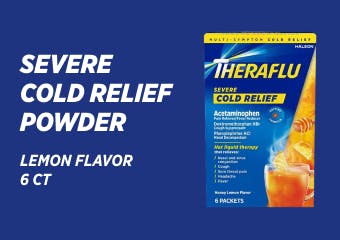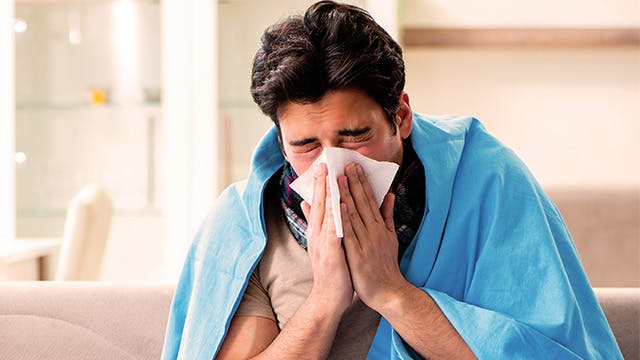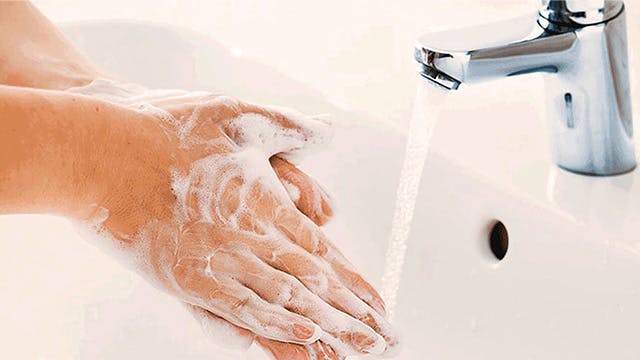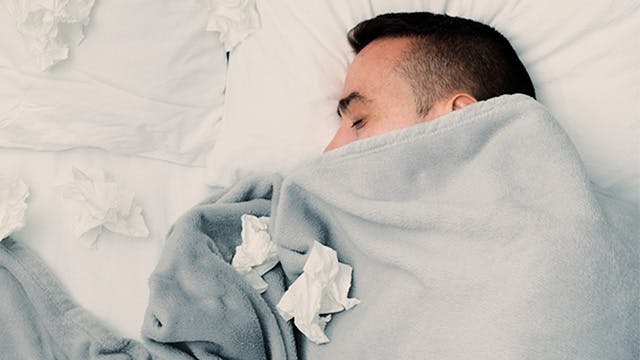Use Effective Cleaning Methods
When cleaning, it is important to follow the instructions on the cleaning product’s label. The label should tell you how to use the product for the safest and most effective cleaning.1 The label should also forewarn you of any tips you need to know when using the product to clean. If the product label recommends you dilute it with water, use room temperature water.1
There is a difference between products that are solely disinfectants and products that are disinfectants with cleaning properties.1 Disinfectants kill viruses and bacteria, and cleaning agents clean on-surface dirt.3 Read the product’s label to find out if it has a cleaning ingredient in it. If the product is just a disinfectant, clean the area with soap or detergent and then use the product.1 You should also be sure to not mix cleaning or disinfectant products.1
Protect yourself while cleaning by wearing gloves, googles, masks, and other equipment that might be necessary depending on what products you use. By wearing appropriate gear, you protect yourself from any risks of the product splashing on your skin or in your eyes.1
Wash your hands immediately after cleaning. Use soap and water, if possible, or use hand sanitizer that includes at least 60 percent alcohol.1
While you’re resting from cleaning your house, open your inside doors and windows some to let the air circulate and any fumes from the cleaning products exit your home.1
Target High Traffic Areas
First things first, target your efforts at the high-traffic areas in your home. Darzynkiewicz says this can be different places, depending on the type of illness you’re dealing with, but often, the kitchen and bathroom are hotspots. “Families tend to congregate in the kitchen, and food is also being handled and prepared there, so this room should be high on your list,” says Darzynkiewicz.
Pay special attention to wiping down often-touched surfaces like countertops, cabinet pulls, appliance handles, and doorknobs. As for the bathroom, certain illnesses might cause the sick to use this room more often, so target the counters, fixtures, and doorknobs here too. And don’t forget things like your cell phone, says Darzynkiewicz, or remotes and tablets. Some other areas that are easy to forget about are the light switches, computers, keyboards, and thermostat.2 Use disposable sponges and wipes to cut down on spreading germs.
To make the cleaning process easier to manage, you can create a weekly schedule to tackle the areas where a lot of people spend time and touch surfaces.2 If you focus on a different room in your house each day, you’ll get the chance to deep clean the small surfaces without possibly forgetting about them.
Know the Difference Between Cleaning vs. Disinfecting
As Darzynkiewicz puts it, you have to understand the difference between cleaning and disinfecting. “Cleaning with soap and water — regularly getting rid of germs and dirt — is a great routine that’s wonderful for illness prevention,” says Darzynkiewicz. “But it you have a sick child or person at home now, you need something that’s going to disinfect, or kill, the germs.”
You could try an antibacterial formula, but bleach or a bleach-based cleaner might be the best option. Bleach is cheap and is listed by the CDC as an appropriate cleaner, says Darzynkiewicz. “But you have to dilute it, use it carefully according to the label, and keep it out of the reach of children.” Whatever you do, don’t mix cleaners — it doesn’t make products more powerful and could do more harm than good.
Some other products that are effective in cleaning and minimizing the germs tracked in your house are:3
- Door mats to leave your shoes on when you come inside the house
- Microfiber cleaning tools like mops and cloths
- Hands-free mops
Use the Hot Cycle on Your Laundry Machine
Laundry is another part of the equation. Once the sick person in your house feels better, go ahead and wash the bedding and other linens they’ve used in hot water. If possible, wash pillowcases daily.
While you’re defending your house against germs with cleanliness, don’t forget to help your sick family member treat their symptoms so they can feel better, fast! Theraflu Multi-Symptom Severe Cold Hot Liquid Powder combines the great taste of Green Tea & Honey Lemon flavors with medicines that go to work on cold and flu symptoms like nasal congestion, cough, body aches, sore throat, and fever.





